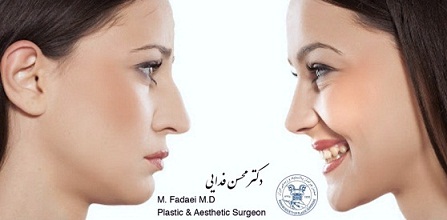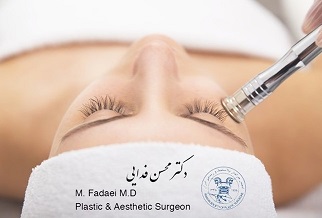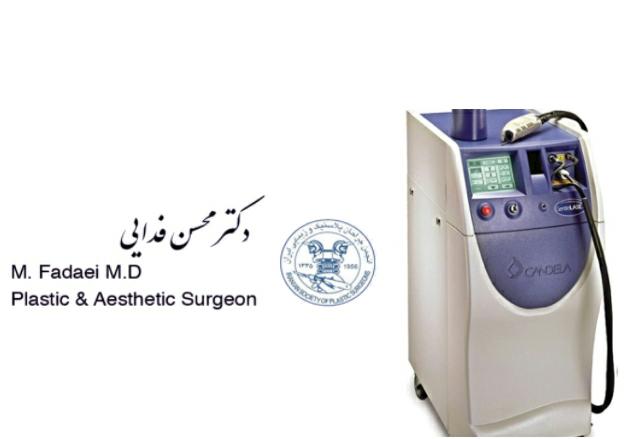After rhinoplasty surgery
After rhinoplasty surgery
After the surgery you need to rest in bed with your head raised higher than your chest, to reduce bleeding and swelling. Your nose may be congested because of swelling or from the splints placed inside your nose during surgery. In most cases, the internal dressings remain in place for one to seven days after surgery. Your doctor also tapes a splint to your nose for protection and support. It’s usually in place for about one week.
Slight bleeding and drainage of mucus and old blood are common for a few days after the surgery or after removing the dressing. Your doctor may place a “drip pad” — a small piece of gauze held in place with tape — under your nose to absorb drainage. Change the gauze as directed by your doctor. Don’t place the drip pad tight against your nose.
Rhinoplasty Recovery Timeline
The average rhinoplasty recovery time is one year. That may sound like a long time, but it becomes much more manageable when it’s broken down into a timeline. The following recovery milestones may vary from patient to patient, but generally, it goes something like this:
1 Week: The splint can be removed from your nose and you can go out in public without showing noticeable signs of surgery unless there is bruising around the eyes. This may take 2 weeks to resolve. It is safe to resume activities of daily living.
2 Weeks: The majority of the facial swelling has subsided and most of the bruising should have resolved.
3-4 Weeks: You can safely return to cardiovascular activities such as jogging, swimming and cycling.
6 Weeks: The bones are stable, you can resume resistance workouts (weight lifting), wearing glasses and blowing your nose.
3-6 months: The numbness and abnormal sensations in your nose and nasal skin should be resolved.
1 Year: The healing process is complete – swelling should have subsided entirely and the nose’s new shape is fully refined.
Is there any way to speed up this timeline? There are actually quite a few things you can do to make your plastic surgery recovery go by more smoothly. We recommend the following tips:
Taking a shower
The cast on your nose will need to be kept dry at all times until it is removed (about a week after surgery). For this reason, you should stay away from the shower. Still, you can wash the rest of your body and use a damp cloth to clean parts of your face. Whatever you do as far as cleaning is concerned, just make sure that you keep the nose area dry.
Wearing Makeup After rhinoplasty surgery
Don’t wear makeup –yet. While wearing makeup is a great way to cover up any post-surgical bruising around your nose and eyes, applying cosmetics to the healing skin and incisions can cause complications and increase your risk of infection. Steer clear of concealers, powders, and other makeup products until you are considered healed enough to use them. Talk with your facial plastic surgeon for more information on your healing time frame.
Food to avoid
• Green tea is touted as an antioxidant powerhouse, but this popular brew can also interact negatively with anesthesia, increase blood pressure, and cause accelerated heart rates. Stop drinking green tea at least 10 days before rhinoplasty, and be sure to ask your doctor when it’s safe to ingest again.
• Fruits and vegetables are typically a staple in a healthy, well-balanced diet, but not when you’re preparing for surgery. During the 24 hours before surgery, we tell my patients to avoid foods that are high in fiber. Fruits, vegetables, and whole grains take longer to digest, and it is important to have as little food as possible in your system before surgery begins.
Listen to Your Doctor After rhinoplasty surgery
First and foremost, follow your doctor’s instructions. You could read 100 web articles like this one about rhinoplasty recovery, but nothing compares to the information you’ll get from your facial plastic surgeon. You will receive specific instructions on what medications to take, when to take them, how to care for the surgical site to prevent infection, and when you’ll need to come back in for a follow-up exam.
AVOID SNEEZING, COUGHING, NOSE BLOWING AND CRYING
All of these can cause swelling in the nose and can irritate the stitches, causing them to bleed or even burst.
Using a humidifier can help to keep the air in your room moist to avoid coughing, and you should stay away from cigarette smoke and other pollute. After rhinoplasty surgery
sleeping
After rhinoplasty, you should sleep on your back with your head elevated on two pillows for at least one week to minimize swelling. Dr. Boyd may require some patients to continue sleeping on their backs for a while longer to avoid damaging the nasal tissues. You will be given personalized instructions according to your particular situation.
conclusion
- Use cold compress around your nose and under your eyes for 12-48 hours after surgery.
- Avoid too much talking and laughing in the first few weeks
- Avoid wearing glasses after your nose job procedure for two months. Learn how to wear glasses after rhinoplasty if you really need to wear glasses.
- Have sufficient rest for the first week after surgery.
- Have a pureed and liquid diet for the first week, including mashed potato, and chicken soup. Avoid tough foods and fruits that are hard to chew, such as apples and carrots.
- Wash the inside of your nose at least 5 times a day using the washing solution your doctor prescribes for you.
- Apply hydrogen peroxide to the suture lines inside the nose at least once a day using a cotton swab. Also, apply antibiotic ointment to the nostrils and surgical area 2-3 times a day.
- Use a few pillows to keep your head elevated for sleeping. This helps to reduce swelling.
- Stop smoking during the healing process (as well as a few weeks before surgery) because nicotine is really bad for healing.
- Avoid intense physical activities and heavy lifting for 6 weeks after surgery.
After rhinoplasty surgery






